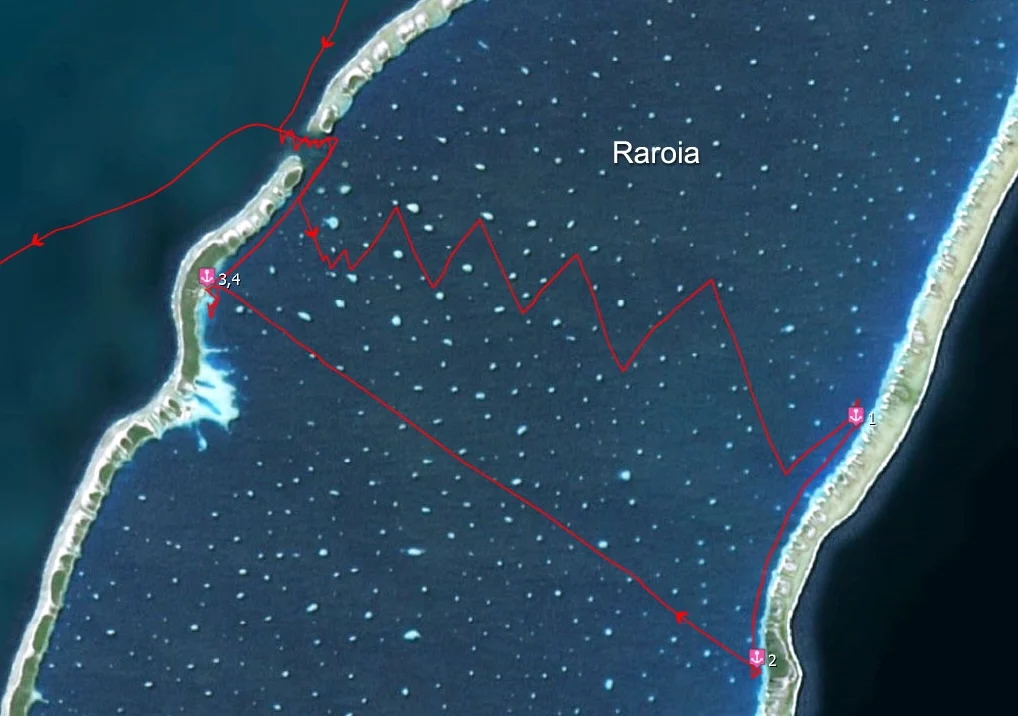Product Narrative Pathways

Looks like the same location, yet now exploring the Tuamotus
When I mention the Tuamotus, most people respond, “Where is that?” or “How do you spell it?” Likely, they’re looking it up on Google Maps. Even then, you need to know where to zoom in to understand what’s going.
Businesses often stumble in the same way with product messaging. Without offering a guiding hand to point out the important details, messaging fades into the endless sea of noise.
By navigating an audience through your product messaging, not only does it clarify matters, but also starts to shape a narrative.
Let’s jump into it
The Tuamotus, the world’s largest atoll chain, covers an impressive 850 square kilometers (328 square miles). However, navigating their atolls by sailboat is no small feat and made me quite nervous.
Atolls are a ring-like island with a lagoon inside. Many times, these lagoons have unseen bommies (mini coral reef clusters) that you can easily hit if not paying attention or planning ahead.
We heard of a few unfortunate boating incidents involving bommies.

How one navigates through the bommies (those little dots)
You don’t want your audience navigating your product messaging like the zig zag line above, weaving around obstacles to figure things out. This will only make them tired, distracted and confused.
It should be clear, connected and easy to follow, guiding them right to the good stuff.
When I chat with smaller companies, their messaging often feels like an atoll. It’s full of potential, but tough to navigate. The fix? Make the path straightforward and highlight what counts.
A helpful resource
Every company has a lagoon full of messaging that grows and evolves overtime. However, a brand still needs to help its audience navigate their messaging to understand what’s going on.
This is especially important for platforms and assets connecting the brand and product narrative including websites, brochures, retail and trade shows.

Product Narrative Pathway
To use Product Narrative Pathways, map the questions your audience has from curiosity to purchase. Now find the best way to connect relevant questions for your particular project to tell a product narrative.
It’s okay to keep in the other questions around your selected path, as those might be useful for another platform. With this approach, you start to see the options, as well as the best possible path together.
To get started, ask yourself:
- How can I simplify the journey from curiosity to purchase?
- Which questions are most relevant to my audience?
- Is this Product Narrative Pathway appropriate for this platform?
- Does my Product Narrative Pathway clearly connect key ideas?
- How do different Product Narrative Pathways weave together?
I started using this for an investment start-up recently and it helped to clarify their website messaging. If we can figure out our Product Narrative Pathways, we reduce the noise.
Connect product messaging with clear pathways to guide your audience
And there’s more
✏️ Join: If you were unable to join the webinar “Manage Creative Freelancers and Agencies like a Pro”, here’s the recording.
📚 Read: I’ve been recommending Playground by Richard Powers to anyone who will listen.
🎧 Listen: Great Strategy Starts with Experimentation by HBR makes a good point about how strategy needs to be tested.
📍Visit: The Tuamotus has some of the best diving in the world and is a unique, beautiful location.